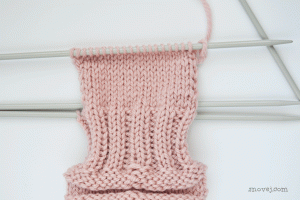
The Train Socks are cute, fun to make, and they stay on well on little, kicking legs! They look like they have train tracks on them, but that is not why they’re called train socks. Nor do you have to ride a train in order to wear them. The name refers to a very specific train ride! And it’s a sweet story …
This year my birth country Finland celebrates 100 years of independence. During this time it has gone through a lot, from wars and poverty to rising up to excellence, ranking on top of lists of everything good! These socks are a little snippet of that amazing story!
During the war in 1940 a train came to a stop. It was announced that the tracks ahead had been bombed. It would take hours upon hours to repair them. On the train was a retired teacher, and opposite her sat a young mother with her 2 month old baby. The teacher noticed that the baby didn’t have anything warm on her feet, so she pulled out her knitting needles and started frogging her own hand knitted white cardigan. With the yarn she knitted a pair of socks for the baby while they were waiting!
True story, and the socks are still with the family today!
PATTERN
Use wool or wool-like yarn, soft cotton yarn works also. The finer the yarn the smaller the sock becomes without adding stitches and rounds.
5 double pointed knitting needles in a size fitting the yarn.

The socks stretch! My granddaughter at age 7 months could wear them all! Now at 15 months she wears the pink ones.
Cuff and Leg:
Cast on 40 stitches. As you do the first round divide the stitches on four needles. (10 on each)
Round 1: Ribbing: knit 2, purl 2 all the way around.
Round 2: Join by continuing ribbing from needle #4 directly to needle #1. Make sure the work is not twisted!
Round 3 – 12: Continue ribbing
Rounds 13 – 16: Purl four rounds
Rounds 17 – 20: Knit four rounds
Rounds 21 -24: Purl four rounds
Rounds 25 – 36: Ribbing for 12 rounds
Repeat rounds 13 – 36

Heel:
Row 1: Knit needles #1 and #2, (20 stitches) Turn, let needles #3 and #4 rest.
Row 2: Purl needles #1 and #2, turn. You can knit all 20 stitches onto one needle if you like.
Rows 3 – 12: Continue with stockinette stitch by repeating rows 1 and 2

The square:
Right leaning decrease: k2tog = knit 2 together
Left leaning decrease:
ssk = slip, slip, knit
or
[sl 1, k1, psso] = slip 1, knit 1, pass slipped stitch over.
Use the method you like best.

Slip 1, knit 12, ssk or [sl 1, k1, psso], turn.

Slip 1, purl 6, purl 2 together, turn, lift 1, k 6, ssk or [sl 1, k1, psso], continue in this manner until waiting side stitches are used up. (At the end of each row one more of the waiting stitches are used).

Gusset:
Row 1:



Knit 8, with a crochet hook pick up 6 new stitches on the side of the heel, and 1 st between the needles, (7 new stitches), transfer these stitches onto needle #1, purl stitches on needles #2 and #3, with a crochet hook pick up 1 new stitch between the needles, then pick up 6 new stitches along the side of the heel. Transfer these stitches onto needle #4, then knit 4 st from needle #1 onto needle #4. You now have 11 st on needles #4 and #1.

Row 2: knit needle #1, purl #2 and #3, knit #4
Row 3: knit 9, knit 2 together, purl #2 and #3, ssk or [sl 1, k1, psso], knit 9
You now have 10 stitches on each needle.
Foot:
Row 4: knit #1, purl #2 and #3, knit #4
Rounds 5 – 8: knit
Rounds 9 – 12: knit #1, purl #2 and #3, knit #4
Rounds 13 – 16: knit
Rounds 17 – 20: knit #1, purl #2 and #3, knit #4
Round 21: knit
Toe:
Needle #1: Knit 7, knit 2 together, knit 1. Needle #2: Knit 1, ssk or [sl 1, k1, psso], knit 7. Needle #3: as on #1. Needle #4: as on #2.
Continue decreasing as on round 1. When there’s only two stitches left on each needle, cut the yarn leaving about 10 inches, pull the yarn through two stitches at a time and remove the needles as you go. Close the hole by pulling at the yarn tail and then fasten off both yarn tails.

There you have it! Happy knitting!
~ Marina
This pattern has also been translated to German and Polish. And it’s of course in Finnish too! You can find the translations on Ravelry here: https://www.ravelry.com/patterns/library/vauvan-sukka
Leave a Reply